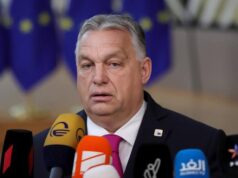How Narendra Modi democratised India’s Parma awards
By
Akhilesh Mishra
The template that India under Modi is presenting has the potential to become the new norm

In India Jan Bhagidari or People’s Participation is one of the key pillars of Prime Minister Narendra Modi’s governance model. It’s a model he developed in his Chief Ministerial stint in the state of Gujarat and scaled it to the national level after he assumed office of Prime Minister.
In fact, one of the first initiatives launched by Prime Minister Modi — in July 2014 — was the platform MyGov with the explicit aim of promoting public participation in decision making and policy formulation. The platform has since grown in scale and impact with more than 20 million registered users who contribute regularly in various policy discussions.
However, MyGov was not the only successful Jan Bhagidari experiment that the Modi government has done. An even more revolutionary experiment — and now widely successful and appreciated — has been the democratisation of India’s civilian awards.
Dubbed in popular parlance as the Padma Awards, the Government of India every year confers civilian awards in three categories: Padma Vibhushan (for exceptional and distinguished service), Padma Bhushan (distinguished service of higher order) and Padma Shri (distinguished service). The Highest Civilian award of India — Bharat Ratna — is considered separate from Padma Awards and is given only in exceptional cases for a lifetime of exceptional services.

President Ram Nath Kovind presents Padma Vibhushan to Dr Belle Monappa Hegde for Medicine, at Rashtrapati Bhavan in New Delhi. He is a cardiologist, physician-scientist, educationist, motivational speaker, author and teacher. He spread awareness among people regarding issues of health and wellnessImage Credit: PTI
The Padma Awards seek to recognise achievements in all fields of activities or disciplines where an element of public service is involved. Various disciplines such as Art, Social work, Public Affairs, Science & Engineering, Trade & Industry, Medicine, Literature & Education, Civil Service, Sports and Others (fields not covered above and may include propagation of Indian Culture, protection of Human Rights, Wild Life protection/conservation etc.).
Although the Padma Awards were instituted in the 1950s, but over the years, they had developed a reputation of being a closed clique with the majority of the recipients being those who were in some form or the other connected to the power circles in the national capital.
Doctors based in Delhi who treated politicians, journalists who hobnobbed with politicians, friends and relatives of ministers, and sometimes even dubious middlemen were the most prominent receivers of these awards in the decade preceding 2014. A vast majority of India, but without connections to the Delhi elite, felt left out from what was supposed to be national awards.
A transparent process
All this changed in 2017 with the government launching a website to transparently receive nominations from people across the country and then these nominations forming the pool for selecting the deserving winners. This was a paradigm shift from the existing system of nominations by politicians and those connected to them.
Anyone could nominate anyone they thought were deserving of the highest civilian awards from their government. The movement — a befitting example of Jan Bhagidari — soon came to be dubbed as People’s Padma.
Consider some of the winners of this year who were honoured by the President of India just a day ago.
Tulsi Gowda from Karnataka is an environmentalist who has planted more than 30,000 over the decades. In an earlier era, she would perhaps have not been even allowed entry into Rashtrapati Bhavan.
But here she was, a practitioner of environmental conservation rather than being merely a talkative activist, walking barefoot in the most hallowed hall of Presidential Palace to resounding applause at her life’s work. She was identified and then awarded because the nomination process was now open to everyone instead of a small elite.
Or consider Harekala Hajabba, an orange vendor who barely managed to make 2 dollars a day, yet apportioned a part of that earning to build and run a school for the underprivileged children. A fully functioning school till grade 10, now educates hundreds of children. The next aim of Hajabba is to use the prize money received to build more such schools and eventually get a college in the remote part the state he lives in.
Take the case of Mohammed Sharif. The 83-year-old, former bicycle mechanic is popularly known as Sharif Chacha in the city for Ayodhya, the place where he comes from. Over the last three decades, he has performed the last rites of over 25,000 unclaimed dead bodies and as per the traditions and customs of their religion.
Progressiveness of government
Matha B. Manjamma, a transgender folk dancer received her Padma award to loud cheers not just inside the Rashtrapati Bhavan but also across the social media. The progressiveness of the government in not being squeamish in recognising the work of the community was widely hailed.
None of these winners, among other equally deserving winners, would have stood a chance in the usual scheme of things. Apart from the obvious lacunae in a closed nomination process, the sheer impossibility of even recognising such ground level contributors would have been impossible without a truly participative process.
However, the true power of making India’s democracy a truly participatory one resides not just in just being able to identify such winners. It has multiple other benefits.
While commentators have, over the centuries, debated the multiple benefits of democracy over other forms of governance, it is its participatory nature that has almost unanimously been recognised as the most outstanding feature. But what is it about participative leadership that makes it so attractive?
First, involvement in decision-making improves the understanding of the issues involved by those who must carry out the decisions for now the people who will actually be affected most by the policy can give direct inputs.
This means the actual effect of the policy is factored in at the stage of policymaking itself thereby insulating it from remaining a mere academic exercise. Second, people are more committed to the actions flowing from the policy where they have been involved in the relevant decision-making.
The citizens, who will actually be affected by the policy, have become a stake holder in the policy so framed rather than it being handed top down, and thus have more stakes in making the policy work. Third, people are less competitive and more collaborative when they are working on joint goals. Fourth, when people make decisions together, the social commitment to one another is greater and thus increases their commitment to the decision.
Mahatma Gandhi, one of the greatest personalities of twentieth century, was among the first to understand the power of such participative decision-making process to mobilise public opinion and this is what contributed to his enormous achievement of converting the freedom movement into a mass movement.
Modi’s mantra
The genius of Prime Minister, inspired by the great Mahatma, lies in learning from this great heritage and deploying it in modern context of converting the development and governance paradigm into a mass movement. MyGov, People’s Padma, his monthly radio address — Mann Ki Baat — are all examples of the participatory nature of his government.
The trust that this participatory format builds then manifests itself in many forms. When Prime Minister Modi appealed for a Janta Curfew — voluntary curfew — in March 2020, more than billion people voluntarily complied. There was no coercion, no mandate, just an appeal. Yet the entire nation stood as one and responded to the appeal.
The trust in the leadership of Prime Minister Modi making that appeal stems from such actions as People’s Padma among others. The people know that it is their government, running for their welfare and with their suggestions.
In an era when the popularity of governments in the democratic world in general and politicians in particular have a short shelf life, the template that India under Modi is presenting has the potential to become the new norm.
Source: Gulf News




